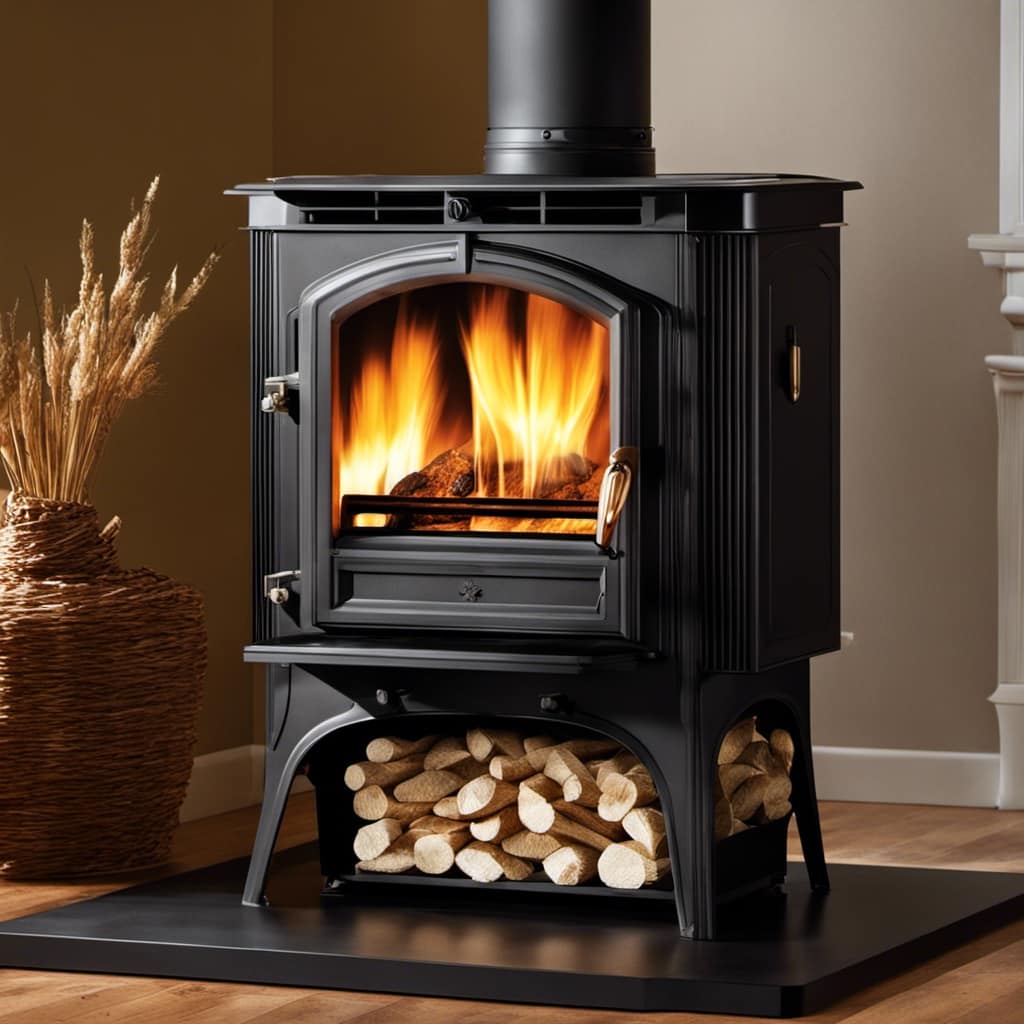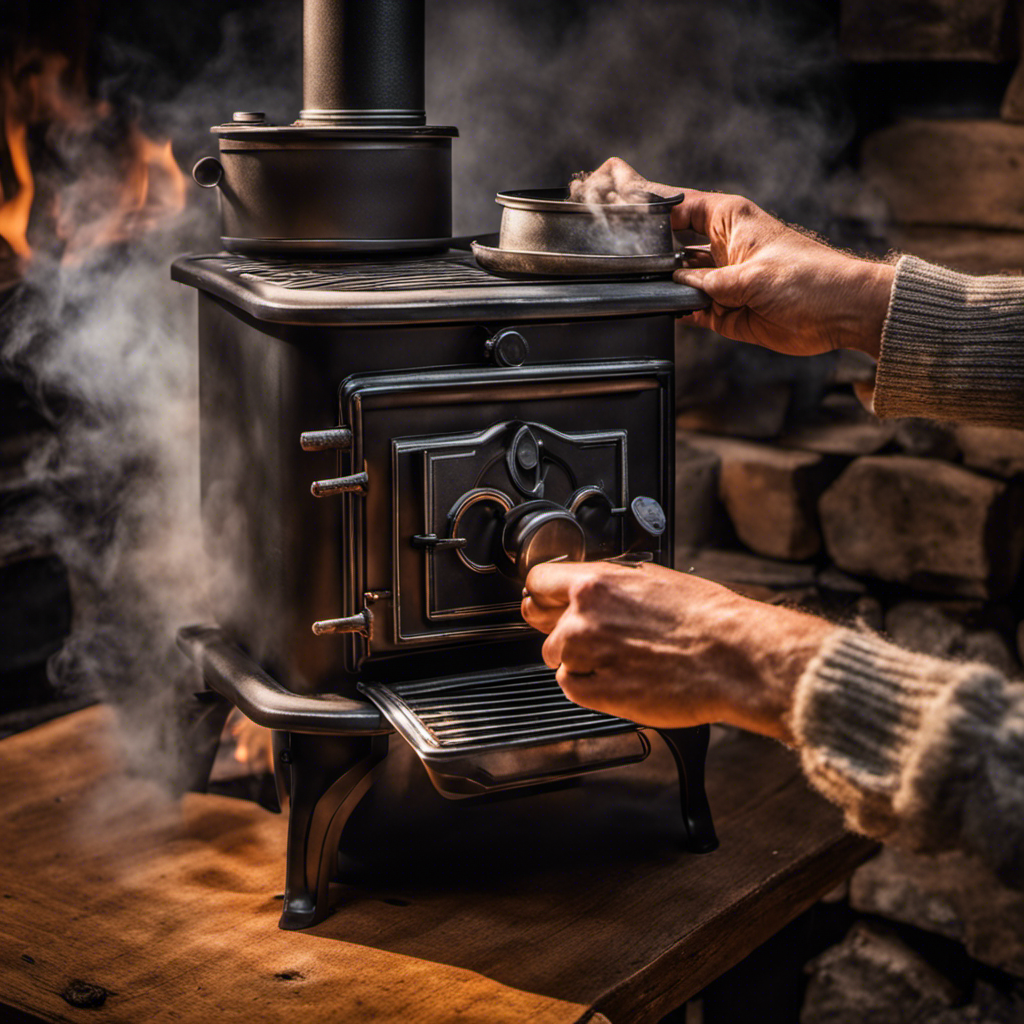
I have found the key to starting a fire in a chilly wood stove. This technique demands patience and accuracy, but once you have mastered it, it will bring warmth and coziness on even the chilliest days.
In this article, I will share my knowledge and expertise on gathering the necessary supplies, preparing the wood and stove, lighting the fire, and maintaining it.
Follow these practical tips and safety precautions, and you’ll be enjoying a cozy fire in no time.
Key Takeaways
- Dry firewood is essential for easy ignition and minimal smoke.
- Hardwoods like oak, maple, or hickory are ideal for longer burning and more heat production.
- Use a combination of small twigs or kindling, newspaper, and fire-starting cubes for efficient fire starting.
- Ensure proper airflow by opening the stove’s damper or vents.
Gathering the Necessary Supplies
I need to gather all the necessary supplies before I can start a fire in the cold wood stove. It’s important to have dry firewood, as wet or green wood can be difficult to ignite and create excessive smoke. When it comes to choosing the best firewood, hardwoods like oak, maple, or hickory are ideal. They burn longer and produce more heat compared to softwoods like pine or cedar.
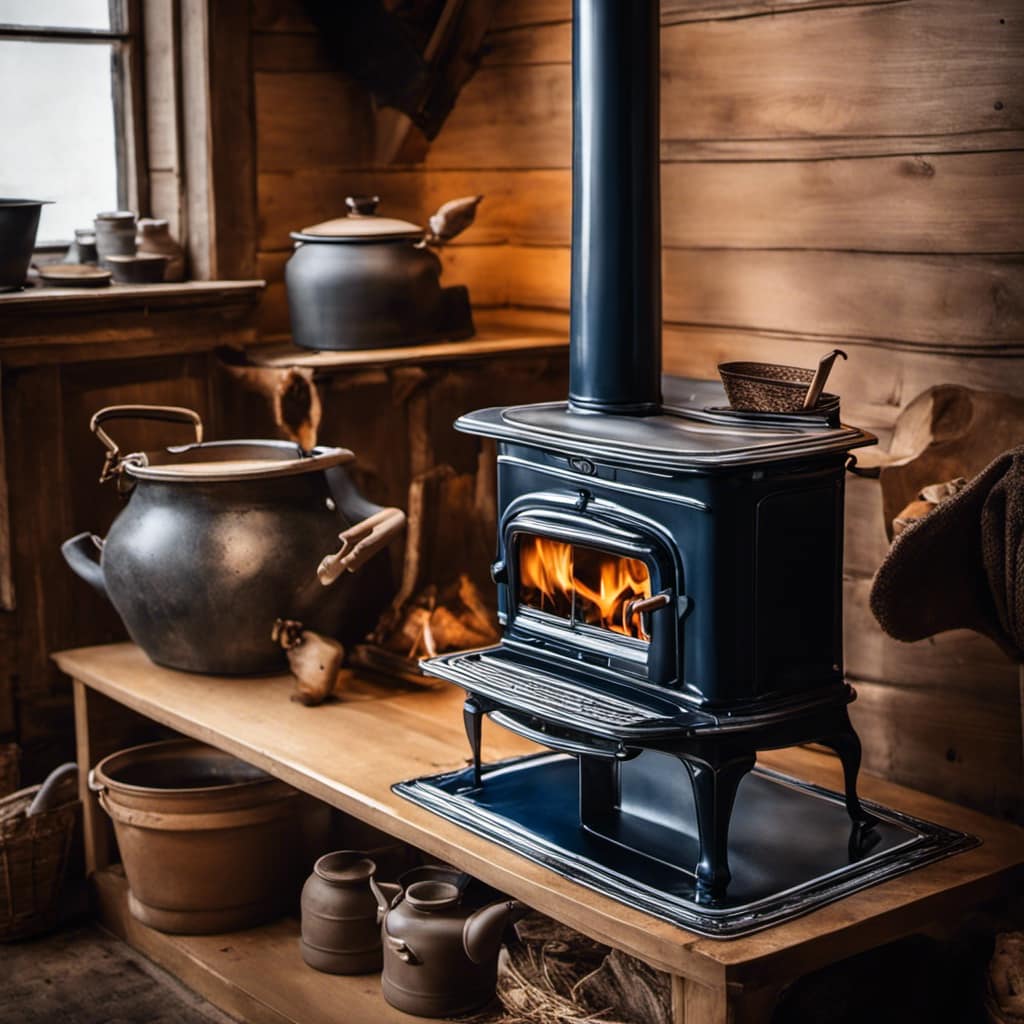
To efficiently start a fire, I recommend using a combination of small twigs or kindling, newspaper, and fire-starting cubes. Arrange the kindling in a crisscross pattern, place the fire-starting cubes in the center, and light the newspaper underneath. This method ensures a consistent ignition and helps the fire spread gradually.
Remember to keep the damper open to allow for proper airflow.
Preparing the Wood and Stove
Before starting the fire, it’s important to properly prepare the wood and stove by removing any ashes and ensuring there’s sufficient ventilation.
When it comes to wood storage, it’s crucial to keep your firewood dry and protected from moisture. Moist wood can be difficult to ignite and will produce less heat. Make sure to stack the wood in a well-ventilated area, preferably off the ground, to prevent it from absorbing moisture.
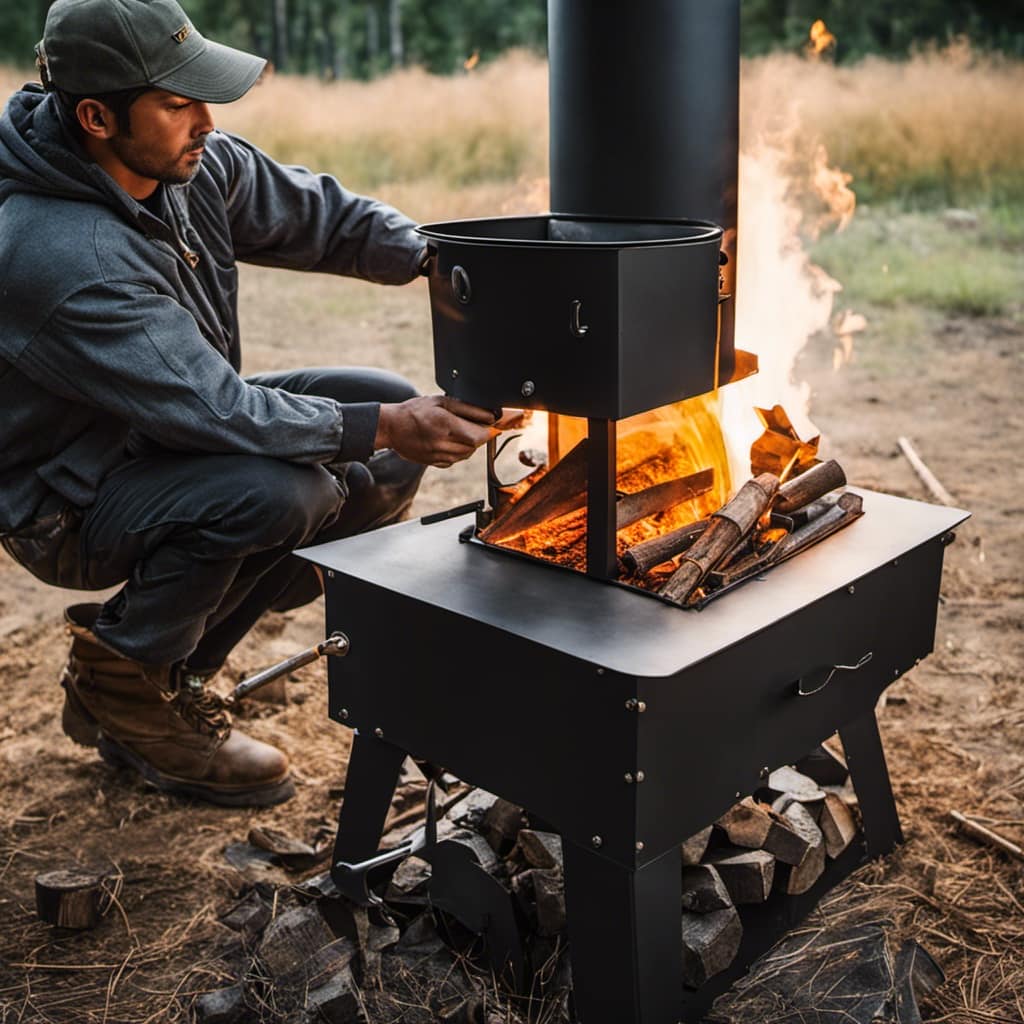
Additionally, it’s essential to clean out any ashes from the stove before starting a new fire. This will help with air circulation and prevent any blockages that could hinder the fire’s performance.
Lastly, check that the stove’s vents are open and unobstructed to ensure proper ventilation. Adequate airflow is necessary for a strong, efficient fire.
Lighting the Fire
Once the kindling is properly arranged, it’s crucial to slowly introduce the flames, using a match or lighter, and carefully add small pieces of wood to build up the fire. Fire starting techniques can vary depending on the situation, but here are some practical tips to help you get a fire going in your wood stove:
- Use dry and seasoned wood to ensure a successful ignition.
- Create a small tinder bundle using materials like newspaper, dry leaves, or wood shavings.
- Place the tinder bundle in the center of the stove and light it with a match or lighter.
- Gradually add small pieces of wood, starting with twigs and gradually progressing to larger pieces.
- Ensure proper airflow by opening the stove’s damper or vents.
Troubleshooting common fire starting problems:
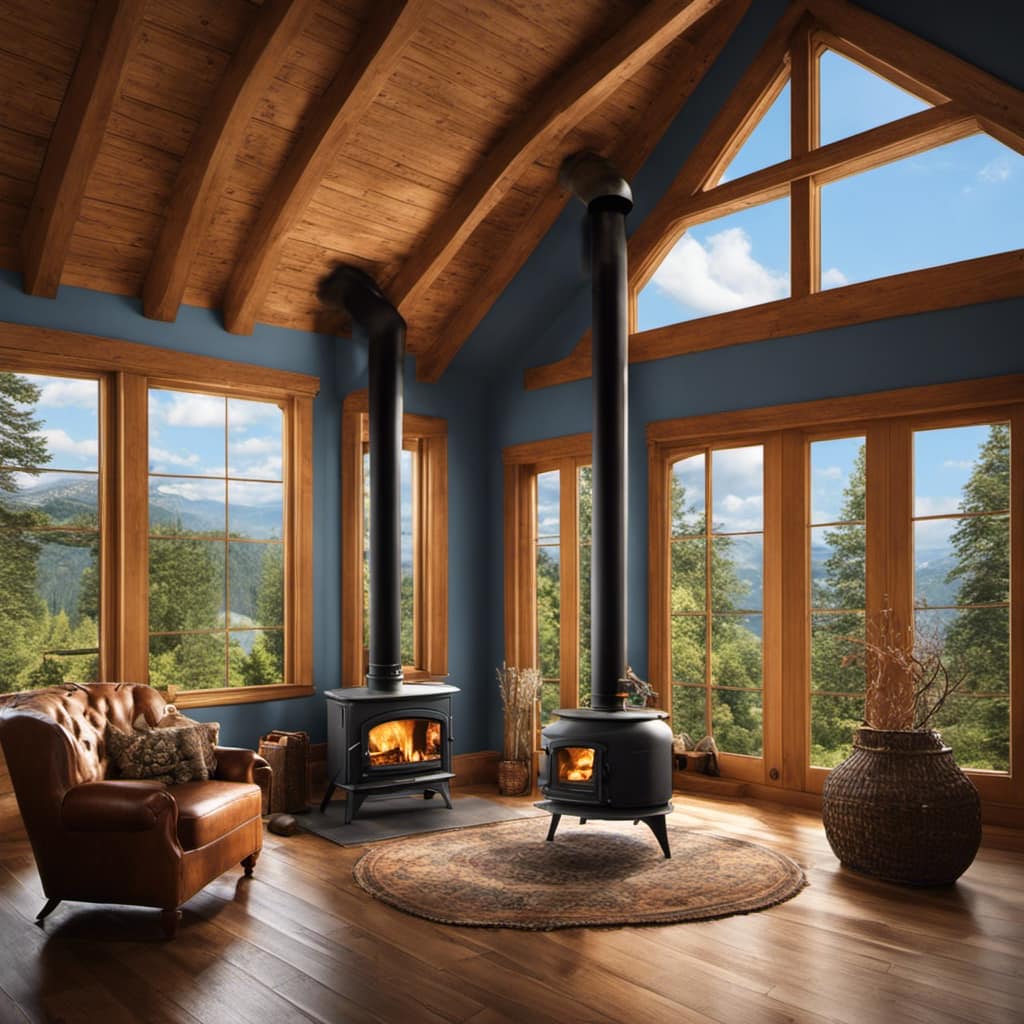
- If the fire is struggling to ignite, check for any blockages in the chimney or stovepipe.
- Make sure the wood isn’t too large or damp, as this can hinder the ignition process.
- Adjust the airflow to increase or decrease the intensity of the flames.
Maintaining and Building the Fire
To keep the fire going, I’ll need to regularly add more wood to the stove and ensure that the flames are properly oxygenated by opening the damper and vents.
But before I can do that, I need to consider the type of firewood I choose. It’s important to select dry, seasoned firewood that has been properly stored for at least six months. Green or wet wood will produce less heat and more smoke, making it difficult to maintain a consistent fire.
Additionally, using fire starters can greatly aid in the process of starting and maintaining the fire. Whether it’s newspaper, kindling, or commercially available fire starters, these ignition sources can help get the fire going quickly and efficiently.
Tips and Safety Precautions
I always make sure to check the smoke detectors and have a fire extinguisher nearby when starting a fire in my wood stove. Safety should always be the top priority when dealing with fire.
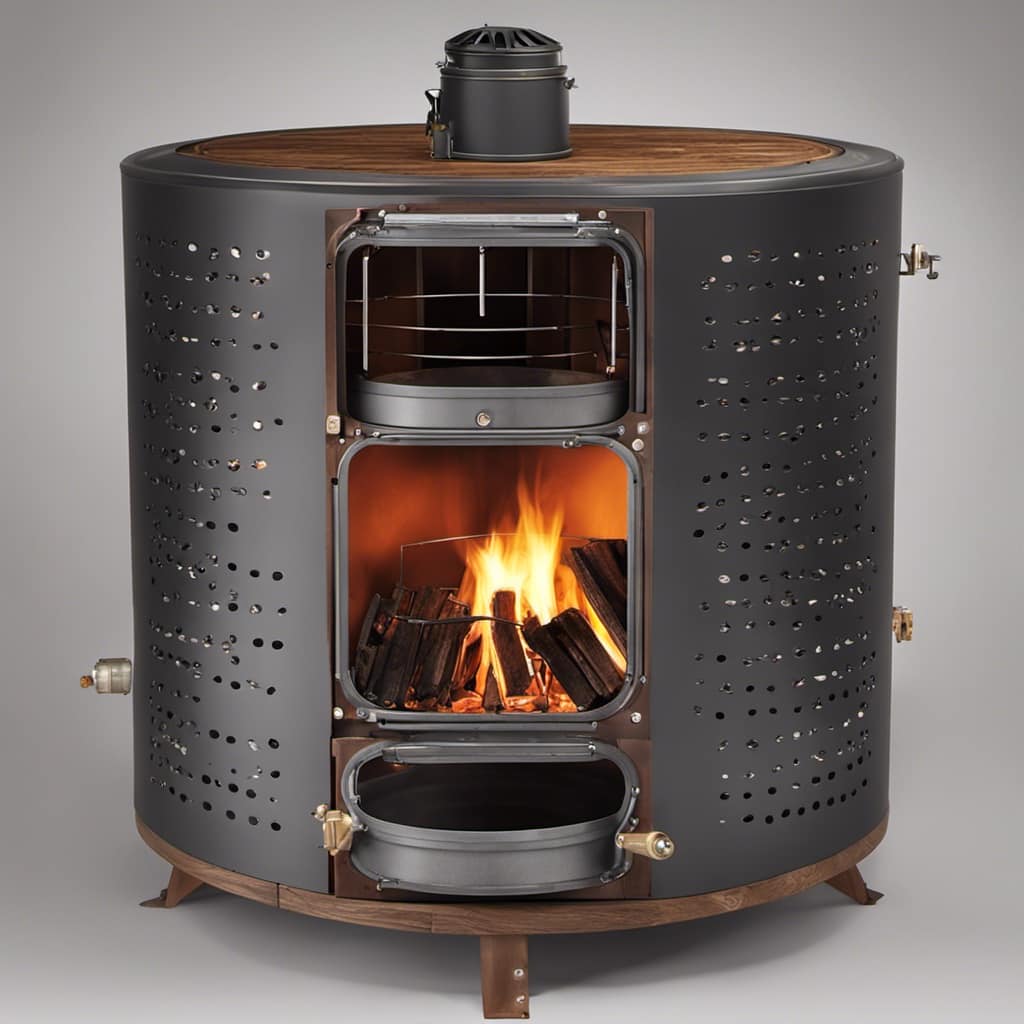
Here are some common mistakes to avoid and troubleshooting tips to help you start a fire in a cold wood stove:
- Use dry and seasoned firewood to ensure a clean and efficient burn.
- Create proper airflow by opening the damper or adjusting the air vents.
- Build a small kindling fire at the bottom of the stove to provide a good base for the larger logs.
- Gradually add larger pieces of wood, allowing each one to catch fire before adding the next.
- Avoid overloading the stove with too much wood, as it can lead to poor combustion and excessive smoke.
Frequently Asked Questions
How Long Does It Typically Take for a Wood Stove to Heat up a Room?
Typically, it takes about 30 minutes for a wood stove to heat up a room. However, to properly ventilate a wood stove and maximize heat output, follow these tips: use dry firewood, open the damper, and adjust the airflow.
Can I Use Any Type of Wood to Start a Fire in a Wood Stove?
I always recommend using dry, seasoned hardwood like oak or maple to start a fire in a wood stove. They burn hotter and longer, providing a steady heat. Avoid using softwoods like pine, as they can create excessive creosote buildup.
How Often Should I Clean the Chimney of My Wood Stove?
I clean my wood stove chimney at least once a year to ensure safe and efficient operation. Regular inspections and maintenance are crucial for preventing creosote buildup and potential chimney fires.
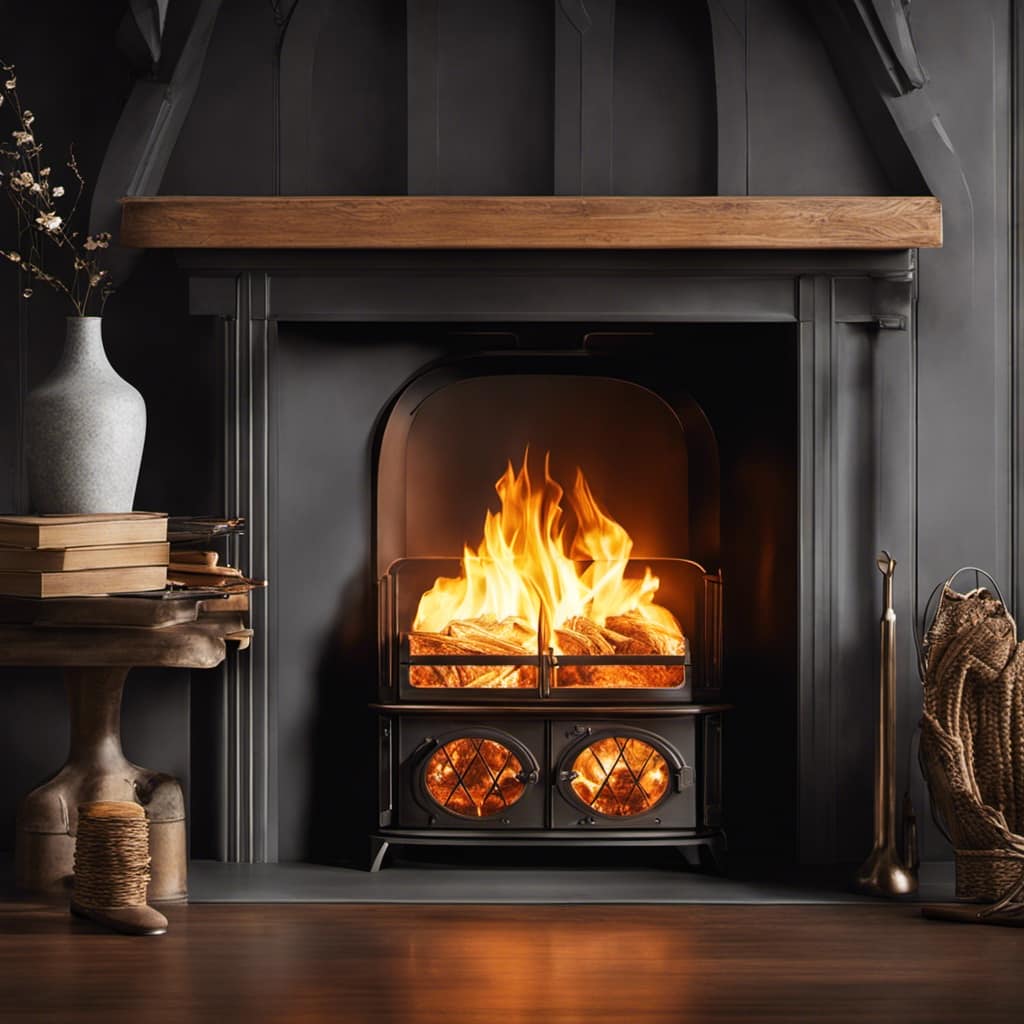
Is It Safe to Leave a Fire Burning Overnight in a Wood Stove?
Leaving a fire burning overnight in a wood stove might seem cozy, but is it safe and energy efficient? Yes, it can cause carbon monoxide poisoning and isn’t the most efficient use of energy.
Can I Cook Food Directly on the Surface of a Wood Stove?
Sure, you can cook food directly on the surface of a wood stove, but it’s important to use appropriate cooking utensils and ensure that the stove is clean and safe. However, there may be alternative heating options for cooking as well.
Conclusion
In conclusion, starting a fire in a cold wood stove requires gathering the necessary supplies, preparing the wood and stove, lighting the fire, and maintaining and building it.
One interesting statistic to note is that a properly built fire can reach temperatures of up to 1,100 degrees Fahrenheit, providing efficient warmth and comfort during cold winter days.

Remember to follow safety precautions and enjoy the cozy ambiance of a well-lit wood stove fire.
Growing up surrounded by the vast beauty of nature, Sierra was always drawn to the call of the wild. While others sought the comfort of the familiar, she ventured out, embracing the unpredictable and finding stories in the heartbeat of nature.
At the epicenter of every remarkable venture lies a dynamic team—a fusion of diverse talents, visions, and passions. The essence of Best Small Wood Stoves is crafted and refined by such a trio: Sierra, Logan, and Terra. Their collective expertise has transformed the platform into a leading authority on small wood stoves, radiating warmth and knowledge in equal measure.


